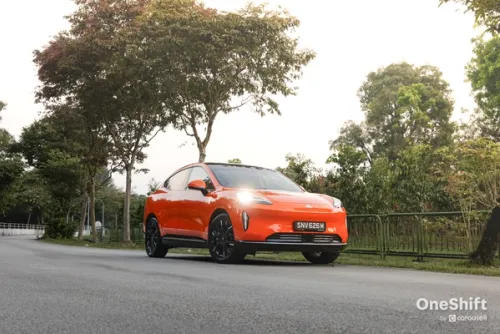McLaren Carbon Technology: From Past To Future
McLaren will bring the past and future of automotive carbon technology together this March.


McLaren will bring the past and future of automotive carbon technology together this March, when five-time Formula 1 Grand Prix winner, John Watson, is reunited with the model that saved his life in 1981, and gets the opportunity to drive the innovative McLaren MP4-12C, which sets new standards for the use of carbon technology.
McLaren sealed its place as an automotive carbon innovator in 1981, when it introduced the carbon monocoque to Formula 1 in the MP4/1. Offering an unbeatable combination of strength and lightness, it had an immediate impact, with Watson winning the British Grand Prix at Silverstone. Later that season it also proved an effective safety cell, with Watson walking away from a dramatic high-speed crash.
On March 4, Watson will be re-united with the MP4/1 at Silverstone. At the same time, he will also drive the McLaren MP4-12C. The 12C is the company’s first car to feature an innovative, hollow carbon chassis structure - the MonoCell. The result is a lightweight, hollow, yet very strong and predictable structure that reinforces McLaren’s place as a carbon pioneer.
Indeed, McLaren has consistently innovated in the field of composites technology. With the 12C high-performance sports car, the company is not only virtually halving the entry price point for carbon-based road cars, but also, through industrialisation of the production processes, is potentially kick-starting the era of carbon chassis in more ‘everyday’ cars.
Antony Sheriff, Managing Director at McLaren Automotive, said: “McLaren is a company driven by a passion to innovate,
“That passion manifests itself in advances in uses of materials and technologies in order to win motor races and produce ground breaking cars. But only now, almost 30 years to the day we introduced the first carbon chassis, are we seeing that technology being to transfer to more mainstream production,
“McLaren Automotive is leading the way, planning to produce up to 5,000 carbon-based cars per year as a range of exclusive and premium sports cars. But I am convinced our ability to move carbon chassis manufacture from hand-built, immensely time-consuming processes, to production-line systems will be a step-change in the industry.”
Speaking about the historic day, John Watson said: “I will be reunited with ‘my’ racing car and get to drive the 12C at Silverstone almost 30 years to the day since driving the MP4/1 out of the pit lane there and it will be both a proud and an emotional moment for me.”
Mark Vinnels, Programme Director at McLaren Automotive, said: “With 30 years experience in carbon technology, the physical benefits of carbon are well known at McLaren. With the 12C and future models, we are now making serious in-roads into economies of scale and industrialization whilst improving quality.”
Featuring eye-catching good looks and superb performance, including a 0 to 100 km/h time of just 3.1 seconds and a top speed of 330 km/h, the MP4-12C is expected to go on sale later this year.
Credits: wilswong


Get the Best Price for your used car
from 500+ dealers in 24 hours

- Convenient and Hassle-Free
- Consumer Protection
Transparent Process
With No Obligation








